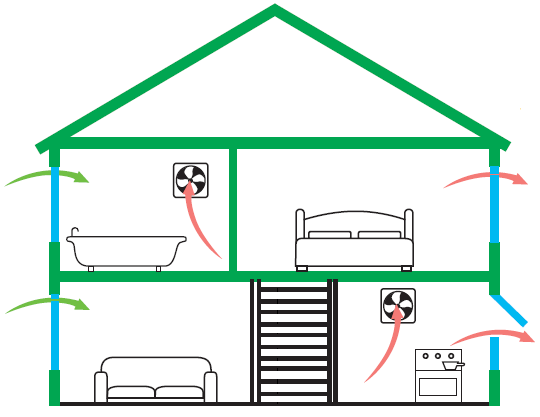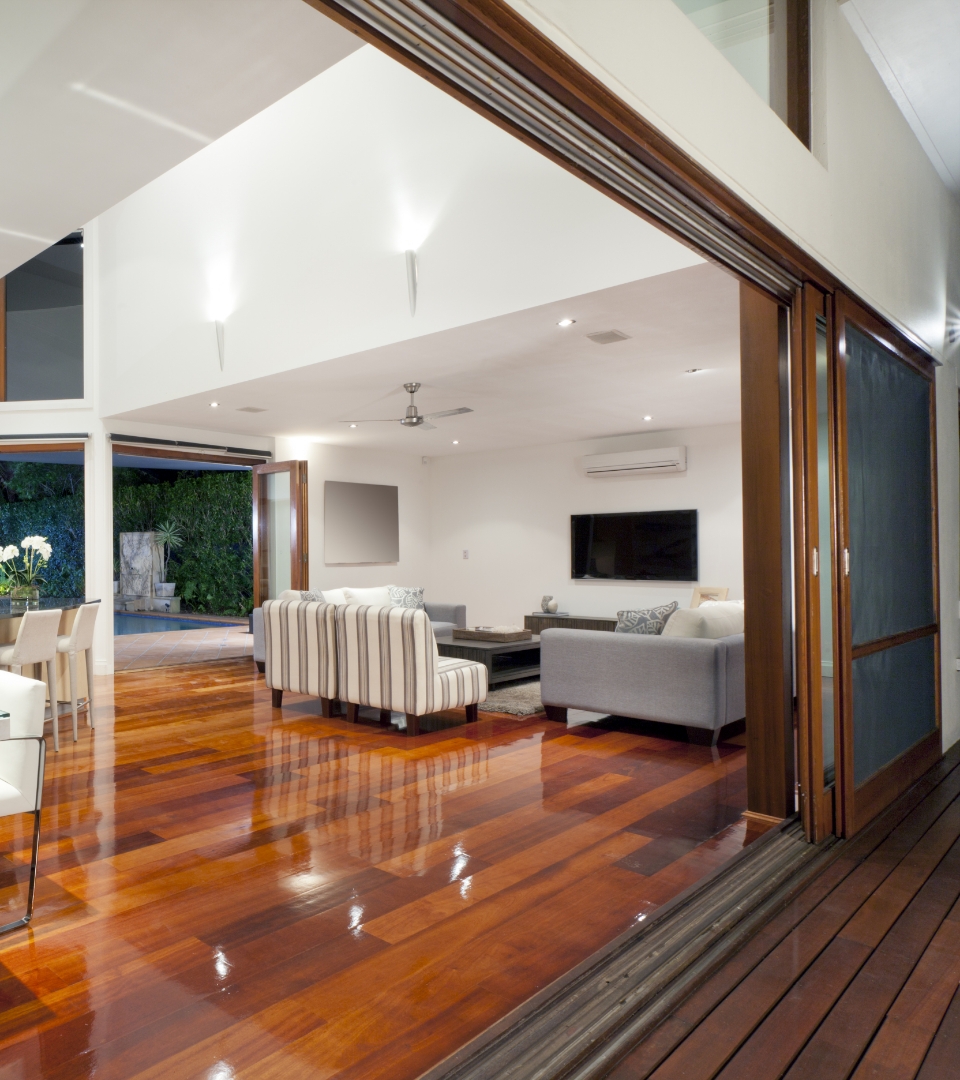TWC in Swindon offers quality windows, doors, conservatories, orangeries, home extensions and porches throughout Wiltshire & Oxfordshire. TWC realises the importance of gaining trust and not expecting it. We believe this is achieved through hard work, honesty, transparency of our services and valuing every one of our customers. The majority of our customers are existing or recommendations, this is because we look after them from the start with a fantastic price, a perfect installation, and our award-winning aftercare.
Search Results for: window & door
Frazer Simpson Limited
Frazer Simpson are a leading supplier and installer of Bespoke Windows, Cavity Closers, Doors, Architectural stone, grp products and Bricks. Our products feature great design and premium quality. To Complement our product range, we offer either a supply only or a supply and fit options to best serve our client’s needs.
Our wealth of experience ensures that whatever project size or location you can rely on Frazer Simpson to provide the correct products to meet the project specifications. Quality is central to our reputation. For peace of mind and to demonstrate our commitment to health & safety, our Installation teams are fully SMAS accredited alongside CERTASS and SSIP. Fitting Services are marked where available.
Cosyseal
At Cosyseal we believe everybody’s work should bring benefit to local communities and wider society. That’s why we focus on Social Value throughout our company. We’ve set ambitious goals and we’ve committed to being measured and assessed externally.
For more than three decades, Cosyseal has provided unrivalled double glazing installation & repairs to Housing Association clients across London and the Home Counties. We specialise in reactive and planned window and door projects for social housing clients throughout the region. Surveyors and residents appreciate the benefits of our services too.
The basics of home ventilation
Ventilating a home helps to create a healthy living environment – find out how and about the different ventilation strategies available to homeowners.
What is ventilation?
Ventilation is the exchange of air between the interior and exterior of a dwelling. The main purpose of ventilation in a home is to remove polluted indoor air and replace it with ‘fresh’ outside air.
Why is it necessary in my home?
The circulating air reduces the risk of danger from harmful indoor pollutants being produced within the home. This helps to provide a healthy and comfortable internal environment for the occupants of a home.
The Building Regulations Advisory Committee in England and Wales require ‘that there shall be adequate means for ventilation provided for people in the building.’
In Scotland the Building Standards state that ‘all buildings require to be ventilated so that the air quality within the building is not a threat to the health of the occupants or the building itself.’
Main types of ventilation
Purge ventilation
Sometimes referred to as rapid ventilation, this is the rapid exchange of large amounts of air between rooms or between a room and the outdoors, and is usually achieved by opening a window or a door.
Benefits:
- Assists with removal of occasional pollutants such as smoke and smells from cooking, or fumes from painting and decorating
- Stops a dwelling from getting too hot and uncomfortable during warm summer periods
Extraction ventilation
This is the active extraction of air from rooms through mechanical means, usually with a fan or air conditioner.
Extraction ventilation is needed in rooms that are regularly exposed to pollutants or excess water vapour such as kitchens and bathrooms. Such rooms can use permanent or intermittent extraction.
Benefits:
- Limits the spread of fumes and pollutants throughout a dwelling
Background ventilation
This is the passive flow of air into and out of rooms via vents, and is achieved by means of ‘a small ventilation opening designed to provide controllable ventilation throughout an entire building’.
Background ventilators should ideally be positioned 1.7 m above floor level to avoid noticeable draughts.
Trickle ventilators are ideal for meeting this requirement. Various devices can be used to open and close vents to suit the activities of the home’s occupants.
Benefits:
- Background ventilation via trickle ventilators can provide a home with a secure, draught-free and consistent supply of ventilation even when windows are locked in a closed position
For more advice and information about ventilation for your home, contact a local GGF Member company.
Energy Efficient Glazing: A Useful Guide
In any property heat will be lost through windows and doors, however this heat loss can be reduced when a home has energy efficient double or triple glazing.
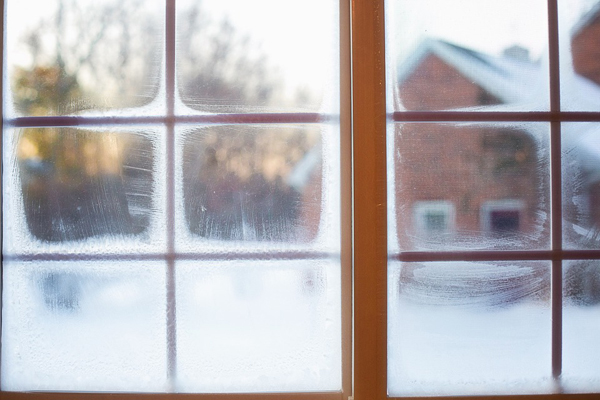
Energy efficient glazing helps keep heat inside the home and, in combination with other home energy efficiency measures (such as cavity wall insulation, loft insulation and an energy-efficient heating system), can lead to a reduction in annual heating bills.
And that’s just the start. The benefits of having energy efficient glazing installed in your home can also include a reduced carbon footprint, improved home security and noise reduction.
If you’re considering investing in energy-efficient glazing, you’re certainly not alone. There’s a lot to gain from this home improvement, but of course there is also a lot to consider.
This short guide will take you through some key information that will help you make an informed decision.
What is energy efficient glazing?
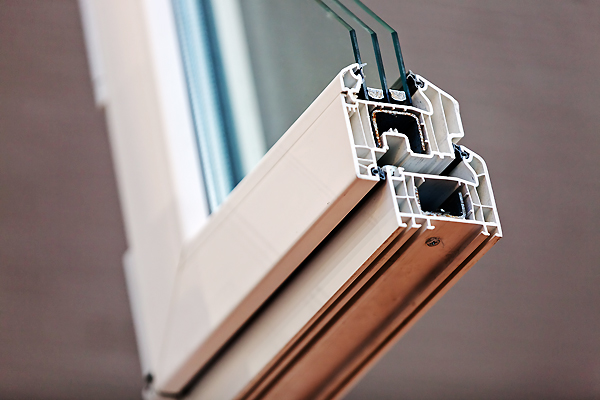
Energy-efficient glazing is the term used to describe glazing consisting of two or more glass panes within a sealed unit. This includes double and triple glazed windows and similar units found within doors.
Energy-efficient windows and doors consist of a framing material (timber, aluminium, PVC-U or composite) into which one or more glass sealed units are fitted according to the style of the window or door.
Energy-efficient glazing is rated according to its ability to reduce the amount of heat that can pass through the window, the capacity for sunlight to travel through the glass unit, and the capacity for air to move through the unit.
Commonly, the highest-rated glazing according to efficiency is made with Low-Emissivity Glass which has a special coating on the inner surface of one pane, enabling light to travel through whilst reflecting heat back into the room.
What is in between the glass panes of a sealed unit?
The air gap limits the amount of cold air able to get into your home. It does this by acting as an insulator and is completely sealed.
The space between the glass panes is filled with air or gas such as argon, krypton or xenon. These help reduce heat loss through the unit. When gas such as argon – which has low conductivity – is used within this space, the window is then even more efficient at keeping heat inside the property and also at interfering with sound waves from inside or outside the house, reducing noise pollution.
Sealed units also have a strip in between the panes, made from metal or polymer. This strip is called a spacer which can contain a drying agent that deals with any moisture that is trapped in the space between the sheets of glass.
The type of frame material used
As with the glass itself, the frame material used in energy-efficient windows and doors is also important.
There are several options here:
- PVC-U has many benefits including performance longevity (usually 20 years or more) and is recyclable.
- Wooden frames are environmentally friendly and are often specified for properties where the use of original materials is necessary, such as those within a conservation area.
- Aluminium frames are an eco-friendly, modern choice because the creation of the material is low impact, recyclable and the slim look of the frames is desirable.
- Composite frames are composed of a combination of wood and aluminium or plastic.
Energy rating and u-values
For ease of purchase, certain window manufacturers label the energy efficiency of their windows with an energy rating ranging from A++ to C, A++ being the most efficient. This rating system has been developed by the British Fenestration Rating Council (BFRC) and it takes into consideration the entire window.
When this energy rating is given, a whole window u-value is also calculated. The u-value refers to how easily heat can pass through the unit. The u-value scale works in the opposite way to an energy rating, in that the higher the u-value, the more easily heat can pass through the window and the window is less efficient.
The benefits of energy-efficient glazing
There are many benefits of EEG, which are increasing all the time as technology and building techniques advance, and our eco-awareness increases.
Key benefits include:
- Improved energy efficiency: Energy-efficient glazing may form part of a wider range of energy-saving measures. If your home also contains cavity wall insulation, loft insulation and an energy-efficient heating system, these can all work together to reduce the amount of energy needed to heat your home. As a consequence, you can enjoy lower energy bills and a reduced carbon footprint.
- Reduced noise pollution: Sealed double and triple glazing can be effective at reducing medium to high-frequency noise, creating a more comfortable, private and peaceful home environment.
See more: Glazing and noise reduction in homes
- Improved thermal insulation: Energy efficient glazing can help to keep your home warmer in winter and cooler in summer. The air or gas gap between the panes of glass in a sealed unit provides an extra layer of insulation. This increased thermal resistance reduces the amount of heat that can escape the home during the colder months. In summer the reverse occurs, and the windows help keep the heat outside, keeping the home cooler.
- Reduced condensation: Energy efficient windows and doors help reduce the risk of condensation which occurs when a cold surface and moist air meet. The resulting moisture can potentially damage the window frame and if it is particularly bad, may even affect other areas of the room.
See more: How double or triple glazing helps reduce condensation
- Safety and security: As there are two or more panes instead of one, energy-efficient glazed windows offer a more secure barrier against unwanted entry than a single glazed window. The level of security can be enhanced further when laminated glass is used.
- Cost savings: Assuming all other measures have been taken, Installing energy-efficient windows can save you money over the long term by reducing the amount of energy required to heat your home.The savings you gain from energy-efficient glazing will depend on a number of factors, including the size of the home, the type of windows you purchase and your energy supplier. For an indication of the potential savings, you could enjoy based on your home and windows.
- A more comfortable living environment: Lower heat loss, plus reduced noise, helps toward a feeling of a much more comfortable home.
- Increased home value: Making energy-saving improvements to your home has the potential to boost its value. Potential homebuyers are increasingly aware of the eco-credentials of any house they consider purchasing. According to a report conducted by the Government based on property sales made between 1995 and 2011, a homeowner making energy-saving improvements to their home could see a 14-38% increase in value as a result.
A note on the importance of ventilation
In newer dwellings with higher-efficiency insulation, a lack of adequate ventilation can increase the risk of condensation forming on internal surfaces – including on windows and other glazed surfaces. A way of reducing this risk is to ensure each room has adequate ventilation, such as trickle ventilators or other forms of ventilation.
Continuous improvements in frames, glass and gas combinations mean the consumer’s energy-efficient window choice is increasing all the time. Energy-efficient glazing is a beneficial addition to any modern
Low-E (Low Emissivity) Glass and Thermal Efficiency
Learn about Low-e glass and how it contributes to energy efficiency, as well as how it can perform under certain conditions.
What is Low-e glass?
Low emissivity glass is glass that has an invisible microscopic coating applied to it in order to improve its thermal efficiency.
How does Low-e glass improve thermal efficiency?
Low emissivity glass is an essential part of most energy-efficient windows and doors. It has a surface coating that operates as follows:
- It allows short wavelength heat from the sun to enter your home through the glazing.
- This solar energy works with your domestic heating system to warm up your room, which then gives off long-wavelength heat radiation.
- A large proportion of that longwave heat would vanish back out through windows made of ordinary glass. However, the Low-e coating reflects that heat back into your room so the heating system does not have to work as hard to maintain comfortable room temperature.
Will Low-e glass meet the Building Regulations?
Better than merely meeting the Building Regulations, Low-e glass will enable you to both achieve and surpass the new targets for windows and doors.
What other characteristics should I be aware of?
Whilst there are significant advantages to selecting thermally efficient Low-e glass for your home, there can be some side effects under certain conditions.
Tint
Recent innovations in creating neutral Low-e coatings minimise the phenomenon of light coloured materials (such as net curtains) appearing slightly darker when viewed through the glass.
Haze
This phenomenon may occur at times of the day when the sun is at a particular angle or under some lighting conditions. It can also be influenced by the type of Low-e coating used.
External condensation
Thermally efficient windows are so good at keeping the heat in that the outer pane can get cold, as it is no longer being warmed by wasted heat.
Under some weather conditions and at certain times of the year, this can result in the formation of condensation on the outside surface of the glass. This is a positive indication of a thermally efficient window.
Hue
Depending on coating type, glass substrate and glass thickness, some slight colour or hue differences may be noticeable on Low-e glass.
This may be more evident when one double or triple glazed window unit is replaced in a home, as the Low-e coating will likely be slightly different (i.e. from a different batch) from those on the other window units.
Overheating
Certain Low-e glass is good at solar heat gain, harvesting free heat energy from the sun, helping to reduce heating demands. In some situations, this can cause overheating resulting in an uncomfortable environment.
It is recommended that a combination of Low-e and solar control glazing be considered for large glazed areas, particularly south-facing conservatories. Guidance should be sought from the manufacturer or supplier.
For more advice about energy efficient windows and other glazing home improvements, contact a GGF Member company near you.
What is secondary glazing?
Secondary glazing can provide a cost-effective and efficient way of improving the heat retention, sound reduction and security of your windows.
Secondary glazing involves installing a “secondary” window, i.e. a fully independent internal window, on the room side of your existing primary window.
Fitting an internal secondary window forms double glazing with your existing single glazed window. The secondary window is a separate unit consisting of a single glazed pane within its own frame and is fitted on the room side of your existing windows and sealed around the edges.
The range of secondary windows includes horizontal sliders, vertical sliders, top hung, side hung, double side hung, lift-outs, and removable fixed panels fitted onto the back of doors.
What are the benefits of secondary glazing?
Secondary glazing is a cost-effective way of improving heat retention and sound reduction in your home, as well as providing some additional security.
It can be a great less expensive alternative to replacing double or triple glazed primary windows.
Secondary windows units usually have separate handles and open so that you can get access to clean and open your primary windows.
Secondary glazing can result in significant cost savings
Secondary glazing is considerably cheaper and easier to fit than replacement windows because it doesn’t require complete removal and replacement of your existing windows.
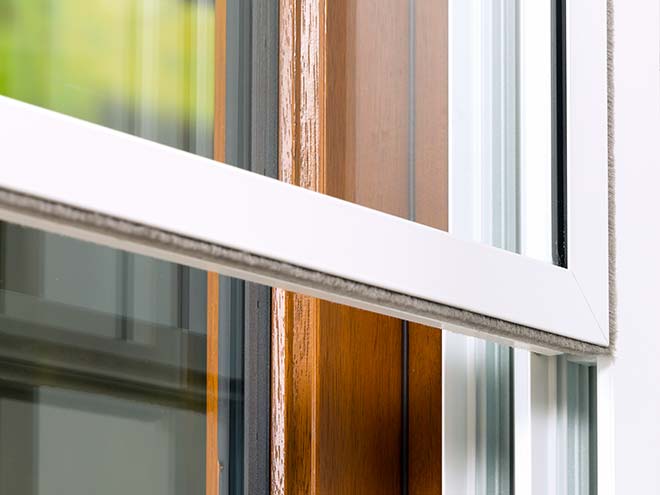
Heat loss is reduced with secondary glazing
A major long-term benefit of secondary glazing is heat retention properties. This is because it adds a second layer of glass behind your existing primary windows that reduce both the amount of warm air that can escape from your home and the amount of cold air that can enter.
The heat generated from your heating system will remain inside rather than escaping through inefficient windows, and there will be fewer draughts, making you feel warmer. Your heating bills could drop substantially as your home becomes more energy efficient, great for you and great for the environment.
Experience less external noise with secondary glazing
Secondary glazing also acts as an extra physical barrier against outside noise, reducing the amount of sound coming into your home through (closed) windows.
This noise reduction can be further improved by installing special sound-reducing laminate glass, or by having a gap of at least 100 mm between the secondary and primary window and lining the window head and reveals in between with acoustic tiles.
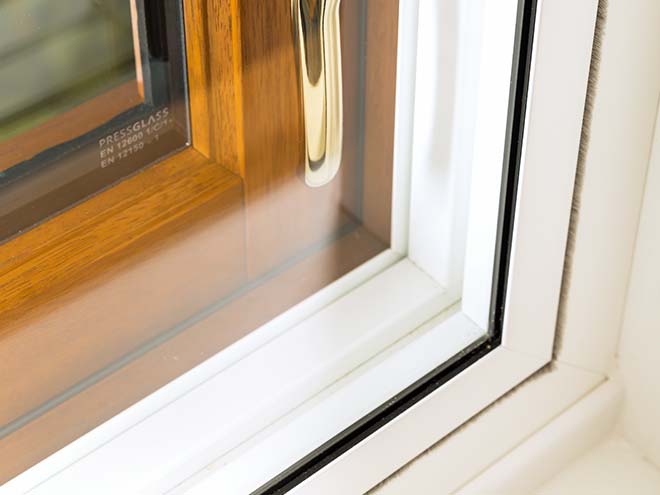
Extra protection for your existing windows
Secondary glazing means your existing primary windows do not need to be removed, and there are many reasons why you might need to retain your original windows.
This is particularly useful in listed buildings, buildings in areas where they are subject to an Article 4 Directive, and areas where planning permission rules do not allow any aesthetic changes whatsoever to the external primary windows.
These older properties are often draughty and adding secondary glazing that doesn’t require any planning permission may be the only effective way to reduce heat loss and improve sound insulation.
In other circumstances where windows cannot be replaced or where you don’t have the budget to replace them, secondary glazing can provide an alternative solution. It’s also a great cost-effective option for rented accommodation.
Secondary glazing is low maintenance
Secondary glazing is low maintenance and doesn’t cause the same level of disruption as fitting replacement primary double or triple glazed windows, and can last for many years.
Conservatories and energy efficiency
A well-designed conservatory can be incredibly energy efficient – improving the level of comfort in your home, helping you save on your monthly energy bill and offering environmental benefits all year round.
A buffer zone for your home
Adding a conservatory to your home can help reduce your overall energy use by creating a ‘buffer zone’ between indoor and outdoor living areas.
Any heat that escapes through your home’s walls into the conservatory will help create a warm space on colder days.
That’s not all, the captured heat can then re-heat the main building on cold days when the doors between your home and the conservatory are opened.
This buffer effect of storing naturally produced heat is an easy way to be environmentally responsible and save on your energy bill.
Improved thermal efficiency
A conservatory can be designed with varying degrees of thermal efficiency. When planning your conservatory, talk to your local GGF Member about the following:
– External quality double glazed doors between your home and the conservatory can provide added thermal performance and security
– Low-emissivity coatings on the inside face of double glazed windows can reduce heat loss from radiators inside the structure. This is strongly recommended for north-facing conservatories.
– Solar control layers can control glare and the amount of the sun’s energy that is transferred into the living space. This is specifically recommended for south-facing conservatories.
– Heating appliances with their own thermostatic controls will allow you to separately control the conservatory’s temperature.
– Designing in natural ventilation such as trickle ventilators, top opening windows or roof vents is far more economical (and environmentally friendly) than air conditioning.
Green credentials of a typical conservatory
The materials typically used to build a conservatory feature a large percentage of recycled material. In addition, the key materials used within your conservatory are all recyclable at the end of the conservatory’s life.
– Aluminium (this can be the conservatory itself or its structural elements) is recyclable with up to 95% being reused.
– PVC-U profiles used in the side frames are 100% recyclable and can be reused numerous times.
– Timber can be fully recycled, and must be responsibly sourced.
– Glass is 100% recyclable.
Planning a conservatory – things to consider
Planning your conservatory
With a wide range of conservatory types available, careful thought and planning can help you decide on the one that fits best with your home and suits the needs of everyone who will be using it.
Once you’ve chosen a conservatory style, here are some more things to consider when planning your glazed home extension.
Size
When deciding on the size of your new conservatory, make sure you’ll have enough space to enjoy it. A handy tip is to mark out the planned dimensions in your living room so you can see how much furniture you’ll be able to fit.
Sunlight
How much direct sunlight will your conservatory receive and at what time of the day? This could have a bearing on your choice of building location and also interior design decisions.
The orientation of your conservatory may mean that certain specifications of glazing are more appropriate than others because of the impact of solar heat gain from the sun (see ‘Glazing’ below).
Materials – general
You can choose from a wide range of materials for your conservatory, not only for the frames but also in the glazing, the roof and any masonry.
Think about the mood and texture you want to achieve. Some people like the ‘outdoor’ feel with tiled floors, patio-type furniture and bare brick or stone for the house wall; others prefer an ‘indoor’ character with carpeting, soft furnishings and wall coverings.
Materials – frame
Aluminium, with thermal breaks for enhanced heat insulation, is a popular choice and is available in a range of colours and finishes.
PVC-U is the most popular frame material with its long life expectancy and minimal maintenance, especially as nowadays a range of wood grain-effect finishes combine the authentic look of wood with all the toughness of PVC-U.
Wood is the natural choice for people who insist on the real thing.
Glazing
Double glazing is a must nowadays to keep a conservatory comfortable all year round and by using low emissivity (Low-E) glass, it can cut heat loss even more.
If the conservatory is south or west facing it is advisable to consider the use of a modern solar control glass for the roof and side panels of the conservatory.
Solar control options range from ‘body tinted’ glass (where the colour in the glass absorbs heat from the sun) to ‘metallic coated’ glass products.
Modern metallic coated products have the advantage of being neutral in appearance, not obscuring views, while still reflecting the sun’s heat.
Roofing
There are two main choices of roofing – glass or polycarbonate.
Glass gives you a clear view through the roof – it can be supplied with solar control and self-cleaning coatings too. Laminated glass and safety filmed glass can add protection you from any falling debris on the roof glazing of your conservatory.
Polycarbonate creates a softer light effect in bright sun (however, it is slightly noisier in heavy rain or hail).
Ventilation
Ventilation is important. You need to be sure that your conservatory will let in fresh air and avoid condensation.
The internal environment can be carefully controlled with the correct specification of both materials and ventilation. Many roofs have built-in trickle ventilation and Building Regulations specify a certain area of opening windows per floor area.
Technological developments mean that you can have opening roof vents installed that can be thermostatically controlled with built-in rain sensors.
Sound control

Whether it be rain, music, lawn mower, traffic or aircraft noise, reducing the impact of environmental sound can enhance the enjoyment of your conservatory.
The use of laminated glass or enhanced acoustic insulation laminated glass can lessen the amount of noise transferring into or out of your conservatory.
In addition, laminated or acoustic laminated glasses have the extra benefit of reducing standard ultra-violet (UV) light transmission. This means sun bleaching of furniture or fittings is dramatically slowed.
Cleaning and maintenance
Consider what will be required to clean and maintain the glass throughout your conservatory.
Surface modified glass such as self-cleaning glass is available from many glazing companies and can reduce the need for cleaning the external window panes, particularly in difficult-to-reach roof areas.
Comfort and convenience
Comfort levels and environmental factors should be considered. You may wish to extend your home’s central heating, install a separate heater or go for an underfloor heating system, but remember careful specification, design of materials and the location of the conservatory itself can all lead to natural environmental control.
Similarly, you can have overhead wiring for lights built-in or simply a few wall sockets for a table lamp and other appliances.
For more advice on choosing the right conservatory for your needs, get in touch with a local GGF Member company.
Pulse Testing – Helping GGF Members Stay Compliant
The Building Regulations update in June of last year introduced the changes to Approved Document F, which meant that Trickle Vents are now mandatory to be fitted in the majority of households.
The GGF are committed to keeping Members competent and up to date with all Building Regulations, and the discourse surrounding the new Building Regulations led us to create our Pulse Testing initiative, which is an alternative to fitting Trickle Vents.
What is a Pulse Test?
Pulse testing is providing the proof that the air infiltration to a building has been made no worse by the addition of trickle vents to your windows. A test is completed before the removal of the existing windows and after the installation has been completed.
Today’s replacement windows are so much better at retaining heat in the home than previous generations, however air tightness technology has not needed to improve in the same way.
The Pulse Test is carried out by a UKAS accredited organisation, such as RISA, and undertaken by a trained professional that is a member of an air pressure testing competent person scheme. The Pulse Testing process would involve an on-site test ‘pre’ and ‘post’ installation, fulfilled by a qualified Assessor.
Trickle Vents will still be required to be installed in a majority of windows and doors, Pulse Testing simply provides homeowners with an alternative.
You can book your test via the button below. The cost of the test is £405 + VAT but GGF Members are eligible for a 25% discount, which means it will cost just £295 + VAT.
If you wish to book multiple tests please email pulse@ggf.org.uk for a price on application.
GGF Recycling Schemes
The GGF Recycling Schemes enable GGF Members to request a collection service for their old windows and doors that are made of uPVC, Aluminium, Timber and Glass across England, Wales and Scotland.
In addition, if you request a uPVC collection, you may also ask for the glass units to be collected at the same time. The scheme allows you to have your old frames and off cuts collected at a date and time of your choosing. The scheme is run in partnership with leading recycling companies in their sector who will be happy to provide you with insight and expert advice should you wish.
The expansion has been a big success to date, and we want to emphasise the importance the role the GGF Recycling Schemes play in our organisation and how it aligns with the GGF’s commitment to sustainability.
Key Points to Consider
– Collection of all uPVC frames and glass is done free of charge and saves you money on skip hire every month.
– For any Aluminium collections you will receive a commission for the surplus material received. The commission rate is linked to the London Metal Exchange value for Aluminium in that given month.
– For timber there is a collection fee applicable which will be confirmed once you have made the request. This cost is a saving against a skip hire of a similar size.
– Regardless of material, windows must be deglazed before collection and all frames must be stacked safely
– All other hardware such as handles, hinges, locks, rubber & silicone can remain on the windows
– All collections are recorded and you will receive a certificate at the end of the year showcasing your green credentials
Timber
The GGF Timber Recycling Scheme is in partnership with Community Wood Recycling (CWR). They are a network of social enterprises collecting and reusing waste wood in the most environmentally beneficial way and creating jobs and training for disadvantaged people.
If you’d like to have wood collected, please get in contact with CWR, on 01273 20 30 40, or alternatively, please send them an email on pearly@communitywoodrecycling.org.uk.
Glass
REHAU and May Glass
GGF Members can access free uPVC and glass collection through our new recycling partners, REHAU and May Glass!
Our updated and enhanced GGF recycling scheme will save your business money on skip hire, make your company more sustainable and ensure that we’re putting old windows back into the industry.
It couldn’t be easier to use the scheme. Simply fill out the enquiry form detailing the materials you need picking up, and our partners will be in touch to discuss your requirements and arrange a collection date.
Aluminium
Our free Aluminium collection service is in place to encourage Members to start to make more sustainable and earth friendly choices, to strengthen the future of the fenestration industry.
In collaboration with our partners Alutrade and in conjunction with the Council for Aluminium in Building (CAB), Alutrade offer an extensive fleet of collection vehicles, which are available across England, Scotland and Wales. What’s more, you will receive a commission on the aluminium collected!
To arrange a collection of your aluminium waste, please fill out the collection enquiry form by clicking here and someone will be in touch.
UPVC
VEKA
The GGF has partnered with new recycling collection providers to make uPVC window recycling even easier.
If your business is located within 50 miles of VEKA Recycling’s facility in Wellingborough, you’re now eligible for free collection!
Previously, the GGF recycling scheme required units to be deglazed from their frames prior to collection. That’s no longer necessary – windows can now be handed over exactly as they’ve been removed from the property.
Simply complete the enquiry form on the Members Hub to arrange your free collection. Our partners at VEKA Recycling will take care of the rest!
REHAU & May Glass
If you’re situated further away from Wellingborough, GGF Members can still access free uPVC and glass collection through our new recycling partners, REHAU and May Glass!
Our updated and enhanced GGF recycling scheme will save your business money on skip hire, make your company more sustainable and ensure that we’re putting old windows back into the industry.
It couldn’t be easier to use the scheme. Simply fill out the enquiry form detailing the materials you need picking up, and our partners will be in touch to discuss your requirements and arrange a collection date.
Join the GGF Recycling Schemes and Start Recycling Today
It’s no secret that recycling plays a substantial role in conserving our environment and resources, and reducing our carbon footprint and by getting your business involved in the GGF Recycling Schemes, we can collectively make a positive impact through our recycling efforts.
GGF Members have the opportunity to showcase their commitment to sustainability, by actively engaging in the GGF recycling schemes.
Our recycling schemes are intended to divert a significant portion of waste from landfills. By separating recyclable materials such as glass, timber, and aluminium, we can ensure that these valuable resources are given a new life. This reduces the strain on landfills, prolongs the lifespan of raw materials, and helps create a more sustainable and circular economy.
The GGF Visits Number 10 Downing Street
Yesterday, GGF President Natalie Little, Group Managing Director John Agnew, Head of Membership and Customer Relations Ben Wallace and Head of GGF Technical Department Dave Borland had the honour of attending Number 10 Downing Street to meet with Prime Minister Rishi Sunak’s Political Advisor, Ameet Jogia MBE.
We were able to discuss in detail the GGF x British Glass collaboration, A Window of Opportunity and how the document articulates a story to educate and inform Government, Treasury and Stakeholders about windows and doors and the contribution that they can make to energy efficiency.
John Agnew, Group Managing Director at the GGF, explains: “The GGF recently conducted a comprehensive piece of research into the part glazing can play in achieving Net Zero, and the results were conclusive. Despite the fact 86% of homes already have double glazing (the government’s previous argument for excluding the sector from the Energy Company Obligation (ECO+) Scheme), we all know that this isn’t the full story. For example, seventy per cent of windows installed since 2002 were C rated and so they don’t meet the relevant building standards of today.”
The GGF translated the research into the easy-to-read ‘A Window of Opportunity’ infographic to highlight the difference glazing can make.
GGF President, Natalie Little said: “Thank you to Arun Photay for facilitating the engagement and for his gracious hospitality. It was certainly a milestone for our industry and any progress that the GGF makes in the space is progress for all stakeholders in this industry.”
Natalie continues: “We successfully highlighted to government that the research calculates a significant 80 million windows would benefit from immediate replacement, saving as much C02 as taking 1.88 million cars off the road. We were also able to demonstrate the timely cost saving benefit to individuals as the research estimates the average annual saving per household for upgrading windows to current standards at £395.” The GGF will continue to support the industry by gathering and collating the facts and presenting them to the people that have the power to make a change.
It was a privilege to meet and speak with Ameet, as it gave the GGF an opportunity to discuss the role of glazing in reducing the nation’s carbon emissions, and all of the fantastic and innovative work taking place in our industry that can make a difference and contribute to the government’s Net Zero Targets for 2050.



Wokingham Glazing Limited
A family run business based in Wokingham that specialises in upgrading your homes windows & doors.
With home improvement on the rise, our aim is to help people with their projects at an affordable price with someone they can trust.
We provide window, door & conservatory installations to Wokingham, Bracknell, Finchampstead, Crowthorne, Winnersh, Sandhurst and all surrounding areas.
Fair prices, superior workmanship and exceptional customer service are guaranteed when you work with us.
Emergency Glazing Register
Find an Emergency Glazier now and make your property safe and secure – simply scroll down, click on your region and either call or send an email to the companies listed for immediate response.
Each company on this register is a GGF Member and complies with the Emergency Glazing criteria set out by the GGF. All companies on the GGF Emergency Glazing Register operate a 24 hours a day, seven days a week service.
East Anglia
Evander Glazing & Locks Ltd
T – 0345 155 2999
E – wecare@evander.com
W – www.evander.com
Great Yarmouth Glass
T – 01493 842 323
E – info@gyglass.co.uk
W – www.gyglass.co.uk
Glassolutions – Installation (Nationwide Coverage) 27/7/365
T – 0870 870 7171
E – new.instruction@glassolutions.co.uk
W- www.solaglas.co.uk
Langley Glazing
T – 0800 731 5829 or 01753 582877
E – info@langleyglazing.co.uk
W – www.24hourglass.co.uk
Kent Blaxill
T – 0800 137 644
E – sales@kentblaxill.co.uk
W – www.kentblaxill.co.uk
UK Glassforce Ltd
T – 0800 393 827
E – support@ukglassforce.co.uk
W – www.ukglassforce.co.uk
Kent, Surrey and Sussex
Dial Glass
T – 01634 267444
E – dialglass@tiscali.co.uk
Evander Glazing & Locks Ltd
T – 0345 155 2999
E – wecare@evander.com
W – www.evander.com
Glassolutions – Installation (Nationwide Coverage) 27/7/365
T – 0870 870 7171
E – new.instruction@glassolutions.co.uk
W – www.solaglas.co.uk
Langley Glazing
T – 0800 731 5829 or 01753 582877
E – info@langleyglazing.co.uk
W – www.24hourglass.co.uk
Turnbridge Wells Glass Works
T – 01892 522415
E – ian@twgw.co.uk
W – www.twgw.co.uk
London
Absolute Glass
T – 0207 394 9323
E – absolute@btinternet.com
W – www.absoluteglass.net
All London Glass (UK) Ltd
T – 0208 445 8330
E – mail@alllondonglass.com
W – www.alllondonglass.com
Aspect
T – 0203 411 6120
E – enquiries@aspect.co.uk
W – www.aspect.co.uk
Evander Glazing & Locks Ltd
T – 0345 155 2999
E – wecare@evander.com
W – www.evander.com
Express Glazing Contractors Ltd
T – 020 7619 6900
E – sales@expressglazingcontractors.co.uk
W – www.expressglazingcontractors.co.uk
GG Glass and Glazing Ltd
T – 0208 527 3333
E – london@ggglass.co.uk
W – www.ggglass.co.uk
Glassolutions – Installation (Nationwide Coverage) 27/7/365
T – 0870 870 7171
E – new.instruction@glassolutions.co.uk
W – www.solaglas.co.uk
J Sapsworth Ltd
T – 01582 573 025
E – barry@sapsworth.co.uk
W – www.sapsworth.co.uk
Langley Glazing
T – 0800 731 5829 or 01753 582877
E – info@langleyglazing.co.uk
W – www.24hourglass.co.uk
Prentice Glass Limited
T – 020 8944 9001
E – sales@prenticeglass.co.uk
W – www.prenticeglass.co.uk
UK Glassforce Ltd
T – 0800 393 827
E – support@ukglassforce.co.uk
W – www.ukglassforce.co.uk
Midlands
Abbey Glass (Derby) Ltd
T – 01332 371883
E – mark.osborne@abbey-glass.co.uk
W – www.abbey-glass.co.uk
Alpha Glass and Glazing Ltd
T – 0800 783 1810
E – alphaglass@btconnect.com
W – www.alphaglassandglazing.co.uk
Burton Glass (Burton on Trent)
T – 01283 567080
E – burtonglass@btconnect.com
W – https://www.burtonglass.co.uk
Emergency Glazing Services
T – 0333 577 3338
E – brad.lingard@hotmail.co.uk
W – www.emergencyglazingleicester.co.uk
Evander Glazing & Locks Ltd
T – 0345 155 2999
E – wecare@evander.com
W – www.evander.com
Glassolutions – Installation (Nationwide Coverage) 27/7/365
T – 0870 870 7171
E – new.instruction@glassolutions.co.uk
W – www.solaglas.co.uk
Norman & Underwood
T – 0116 2318000
E – pwelsh@nandu.co.uk
W – www.nandu.co.uk
Roman Glass Ltd (Bromsgrove)
T – 01527 836 777
E – sales@romanglass.co.uk
W – www.romanglass.co.uk
Roman Glass Ltd (Hereford)
T – 01432 272 764
E – sales@romanglass.co.uk
W – www.romanglass.co.uk
[/otw_shortcode_content_toggle]
Northern Ireland
Glassolutions – Installation (Nationwide Coverage) 27/7/365
T – 0870 870 7171
E – new.instruction@glassolutions.co.uk
W – www.solaglas.co.uk
John Hunter Glazing
T – 028 906 56297
E – johnhunterglazing@btconnect.com
W – www.johnhunterglazing.co.uk
Enterprise Glass
T – 07787 838 490
E – Joe@enterpriseglass.co.uk
W –www.enterpriseglass.co.uk
North West and North Wales
GG Glass and Glazing Ltd
T – 0151 207 8070
E – liverpool@ggglass.co.uk
W – www.ggglass.co.uk
Evander Glazing & Locks Ltd
T – 0345 155 2999
E – wecare@evander.com
W – www.evander.com
Glassolutions – Installation (Nationwide Coverage) 27/7/365
T – 0870 870 7171
E – new.instruction@glassolutions.co.uk
W – www.solaglas.co.uk
Hughes Glass & Glazing Ltd (Bangor)
T – 01248 360 325
E – sales@hughesglass.co.uk
W – www.hughesglass.co.uk
River St Glassworks (Bolton) Ltd
T – 01204 454 444
E – jim.dyson@rsgbolton.co.uk
W – www.rsg-glass.co.uk
Safety Glaze Ltd
T – 0800 169 4083
E – nick@safety-glaze.co.uk
W – www.safety-glaze.co.uk
North East, Yorkshire and Lincolnshire
Evander Glazing & Locks Ltd
T – 0345 155 2999
E – wecare@evander.com
W – www.evander.com
GG Glass and Glazing Ltd
T – 0113 387 0660
E – leeds@ggglass.co.uk
W – www.ggglass.co.uk
Glassolutions – Installation (Nationwide Coverage) 27/7/365
T – 0870 870 7171
E – new.instruction@glassolutions.co.uk
W – www.solaglas.co.uk
Leeds Glass
T – 0800 542 8000
E – info@leedsglass.co.uk
W – www.leedsglassgroup.co.uk
Middleton’s Glass
T – 01472 352288
E – middletonsglass.ltd@ntlbusiness.com
True Window Care
T – 01522 791212
E – sales@truewindowcare.com
W – www.truewindowcare.com
Wadds Glass Ltd
T – 0191 487 3383
E – admin@waddsglass.com
W – www.waddsglass.com
Wessex and Channel Isles
Aaro Glass Ltd
T Poole – 01202 665 600
T Southampton – 02380 371603
T Portsmouth – 02392 401675
E – sales@aaroglass.co.uk
W – www.aaroglass.co.uk
Evander Glazing & Locks Ltd
T – 0345 155 2999
E – wecare@evander.com
W – www.evander.com
Glassolutions – Installation (Nationwide Coverage) 27/7/365
T – 0870 870 7171
E – new.instruction@glassolutions.co.uk
W – www.solaglas.co.uk
Roman Glass Ltd (Gillingham)
T – 01747 822 541
E – sales@romanglass.co.uk
W – www.romanglass.co.uk
Roman Glass Ltd (Swindon)
T – 01793 525 608
E – sales@romanglass.co.uk
W – www.romanglass.co.uk
Roman Glass Ltd (Weymouth)
T – 01305 761 363
E – sales@romanglass.co.uk
W – www.romanglass.co.uk
West of England and South Wales
Camel Glass – Barnstaple Branch
T – 07968328577
E – Barnstaple@camelglass.co.uk
W – www.camelglass.co.uk
Camel Glass – Redruth Branch
T – 07841743491 or 07841743492
E – Redruth@camelglass.co.uk
W – www.camelglass.co.uk
Cornwall Glass & Glazing Ltd
T – 01726 66325
E – info@cornwallglass.co.uk
W – www.cornwallglass.co.uk
Dunheved Glass Centre
T – 01566 776444
E – sales@dunhevedglass.com
W – www.dunhevedglass.com
Evander Glazing & Locks Ltd
T – 0345 155 2999
E – wecare@evander.com
W – www.evander.com
Glassolutions – Installation (Nationwide Coverage) 27/7/365
T – 0870 870 7171
E – new.instruction@glassolutions.co.uk
W – www.solaglas.co.uk
Newquay Glass Centre
T – 01637 873233
E – info@newquayglass.co.uk
W – www.newquayglass.co.uk
MPN Windows, Doors & Conservatories – Glyncorrwg
T – 01639 851 287 Out Of Hours Contact – 07976 640959
W – www.mpnwindows.com
MPN Windows, Doors & Conservatories – Maesteg
T – 01656 648 464 Out Of Hours – 07976640959
W – www.mpnwindows.com
MPN Windows, Doors & Conservatories – Neath
T – 01639 851 287 Out Of Hours – 07976640959
W – www.mpnwindows.com
MPN Windows, Doors & Conservatories – Bridgend
T – 01656 648 464 Out Of Hours – 07976640959
W – www.mpnwindows.com
MPN Windows, Doors & Conservatories – Cardiff
T – 02920 508 770 Out Of Hours – 07976640959
W – www.mpnwindows.com
Penryn Glass Centre
T – 01326 375124
E – info@penrynglass.co.uk
W – www.penrynglass.co.uk
Plymouth Glass & Glazing
T – 01752 605500
E – info@plymouth-glass.co.uk
W – www.plymouth-glass.co.uk
Ray’s Glass Centre
T – 01736 360174
E – info@raysglass.co.uk
W – www.raysglass.co.uk
Redruth Glass Company
T – 01209 211028
E – info@redruthglass.co.uk
W – www.redrithglass.co.uk
Roman Glass Ltd (Bath)
T – 01225 337 433
E – sales@romanglass.co.uk
W – www.romanglass.co.uk
Roman Glass Ltd (Bridgewater)
T – 01278 427 727
E – sales@romanglass.co.uk
W – www.romanglass.co.uk
Roman Glass Ltd (Bristol HQ)
T – 0117 9615 499
E – sales@romanglass.co.uk
W – www.romanglass.co.uk
Roman Glass Ltd (Bristol Kingswood)
T – 0117 960 7017
E – sales@romanglass.co.uk
W – www.romanglass.co.uk
Roman Glass Ltd (Bristol Stokescroft)
T – 0117 942 0307
E – sales@romanglass.co.uk
W – www.romanglass.co.uk
Roman Glass Ltd (Burnham-on-Sea)
T – 01278 789 069
E – sales@romanglass.co.uk
W – www.romanglass.co.uk
Roman Glass Ltd (Cardiff)
T – 02920 796 398
E – sales@romanglass.co.uk
W – www.romanglass.co.uk
Roman Glass Ltd (Chippenham)
T – 01249 656 587
E – sales@romanglass.co.uk
W – www.romanglass.co.uk
Roman Glass Ltd (Devizes)
T – 01380 727 005
E – sales@romanglass.co.uk
W – www.romanglass.co.uk
Roman Glass Ltd (Evesham)
T – 01386 446 880
E – sales@romanglass.co.uk
W – www.romanglass.co.uk
Roman Glass Ltd (Exeter)
T – 01392 424 007
E – sales@romanglass.co.uk
W – www.romanglass.co.uk
Roman Glass Ltd (Frome)
T – 01373 466 931
E – sales@romanglass.co.uk
W – www.romanglass.co.uk
Roman Glass Ltd (Gillingham)
T – 01747 822 541
E – sales@romanglass.co.uk
W – www.romanglass.co.uk
Roman Glass Ltd (Gloucester)
T – 01452 525 262
E – sales@romanglass.co.uk
W – www.romanglass.co.uk
Roman Glass Ltd (Minehead)
T – 01643 702 660
E – sales@romanglass.co.uk
W – www.romanglass.co.uk
Roman Glass Ltd (Stroud)
T – 01453 725 455
E – sales@romanglass.co.uk
W – www.romanglass.co.uk
Roman Glass Ltd (Taunton)
T – 01823 352 351 / 338 011
E – sales@romanglass.co.uk
W – www.romanglass.co.uk
Roman Glass Ltd (Teignmouth)
T – 01626 776 679
E – sales@romanglass.co.uk
W – www.romanglass.co.uk
Roman Glass Ltd (Torquay)
T – 01803 315 656
E – sales@romanglass.co.uk
W – www.romanglass.co.uk
Roman Glass Ltd (Trowbridge)
T – 01225 769 373
E – sales@romanglass.co.uk
W – www.romanglass.co.uk
Roman Glass Ltd (Wells)
T – 01749 679 548
E – sales@romanglass.co.uk
W – www.romanglass.co.uk
Roman Glass Ltd (Weymouth)
T – 01305 761 363
E – sales@romanglass.co.uk
W – www.romanglass.co.uk
Roman Glass Ltd (Yeovil)
T – 01935 472 824
E – sales@romanglass.co.uk
W – www.romanglass.co.uk
Truro Glass Centre
T – 01872 276697
E – info@truroglass.co.uk
W – www.truroglass.co.uk
Scotland
A1 Glass Co. Ltd
T – 01563 531626
E – enquiries@a1-glass.co.uk
W – www.a1glasscokilmarnock.co.uk
All Glass and Glazing
T – 01382 814273
E – sales@allglassandglazing.co.uk
W – www.allglassandglazing.co.uk
Capital Glazing Ltd
T – 0131 337 0866
E – capitalglaze@btconnect.com
W – www.capitalglazing.co.uk
GG Glass and Glazing Ltd
T – 01236 456 611
E – cumbernauld@ggglass.co.uk
W – www.ggglass.co.uk
Gladeunit T/A The Glass Man
T – 01698 334545
E – theglassman@btconnect.com
W – www.theglassmanuk.co.uk
Glassolutions – Installation (Nationwide Coverage) 27/7/365
T – 0870 870 7171
E – new.instruction@glassolutions.co.uk
W – www.solaglas.co.uk
Peter Noble Glazing Co. Ltd
T – 0131 660 2404
E – pnobleglazing@aol.com
W – www.nobleglazing.co.uk
The System House Group
Jack Aluminium Systems Limited
Jack Aluminium Systems design and develop innovative, cost-effective and high-performance commercial and residential aluminium glazing solutions.
Using value engineering principles, our team creates systems that offer the best of everything – security, energy efficiency and durability.
Our extensive range includes robust thermal and non-thermal shopfront and doorset systems, curtain walling suites & residential aluminium windows and doors and flat rooflights.
With fast lead times on profile, the best service and technical information and advice when you need it, choose Jack Aluminium as your aluminium systems supplier.
Reynaers Aluminium UK
As a leading supplier of innovative and sustainable architectural aluminium systems in the UK, we at Reynaers take pride in delivering high-quality window, door, and curtain walling systems for residential and commercial projects. Our expertly engineered systems are designed to meet the highest requirements when it comes to critical characteristics such as design, functionality, performance, and aesthetics. We offer consultations to architects and building professionals at every stage of the project, including conceptualization, specification, fabrication, and installation. Our commitment to innovation is reflected in our pioneering virtual reality system, Avalon, which allows our customers to visualize and experience their projects before they become reality. Our unparalleled product quality, expertise, and innovation make us the partner of choice for architects, fabricators, and installers. Based in Birmingham, we are ideally placed to support projects across the UK, and our showroom provides a space for our customers to explore our products and receive hands-on training. As part of Reynaers Group (headquartered in Duffel, Belgium), we have a global presence with products used on projects in more than 30 countries.
Our featured products include:
What is Embodied Carbon?

Embodied carbon is the CO₂ emissions that are related with materials and the construction process of a building. This is including any CO₂ that is generated during the extraction of raw materials, the manufacturing and refinement, transportation, installation, the practices applied and disposal can all produce embodied carbon emissions. Fundamentally, embodied carbon is assembled into the fabric of the building.
In short, embodied carbon is the carbon footprint of a building before it becomes functioning. It also refers to:
- the CO₂ that is produced when upholding the building
- the demolishing of the building
- transporting the waste
- recycling the waste
Embodied carbon differs distinctly from operational carbon, which is the carbon that comes from energy, heat, lighting and so on. Current data from the World Green Building Council shows us that embodied carbon is becoming a larger part of a building’s general carbon footprint.
Embodied carbon is certainly moving its way up the agenda for industry and government. While it currently explains for 11% of greenhouse gas emissions, the projected increase of construction initiatives over the coming decades means it’s believed that by the Government’s goal of Net Zero in 2050, embodied and operational carbon emissions will be at the same level.
Efficient Windows and Doors Can Help to Reduce Your Carbon Emissions
In our current climate where everybody is rightfully becoming more environmentally conscious, it’s great that you can purchase hybrid cars, use less plastic, limit your meat consumption, but just by installing brand new windows, it can help with your energy costs and reduce greenhouse emissions.
Not only do energy efficient products save you a ton of money on your energy bills, they also benefit the world’s carbon emissions. With energy efficient products you can reduce greenhouse gas emissions from your home.
Just switching to new windows alone can reduce the annual household’s carbon footprint by up to 12%, compared to non-energy efficient products. Insight from Conservation Construction shows us that in addition, energy efficient windows can save between 246-2001 pounds of CO2 a year.
Find a responsible and sustainable GGF Member to make your home improvements today.
Savills Glass Limited
Savill Glass Ltd is a local family run company, with over 35 years of successful trading in the Yorkshire area. Our standing in the market place is extremely important to us. That is why our reputation for quality generates a very high ratio of recommended customers.
We offer a professional service of high quality products which provide the highest levels of security and minimal maintenance.
All double glazed units, windows, doors & conservatories are manufactured to your individual specification using either the 70mm Rehau system, or the latest PVC-u window and door system, both manufactured to BSi standards.
Mark Smith Glazing Ltd
Founded in 1997 Mark Smith has earned a deserved reputation for quality craftsmanship, competitive and transparent pricing, reliability and sensitivity to his customer needs. Above all, Mark has a dedicated, experienced team to back up this reputation.
We will competitively quote for all domestic and commercial glass and mirror work including double glazing, sash and case windows, shop fronts, patio doors, balustrades and balconies and energy efficient windows.
Mark Smith Glazing expanded in 2006 purchasing what was (previously J&B Windows). Our products include UPVC, Aluminium Windows and Doors and roof lights.
Simple and Easy Green Home Improvements
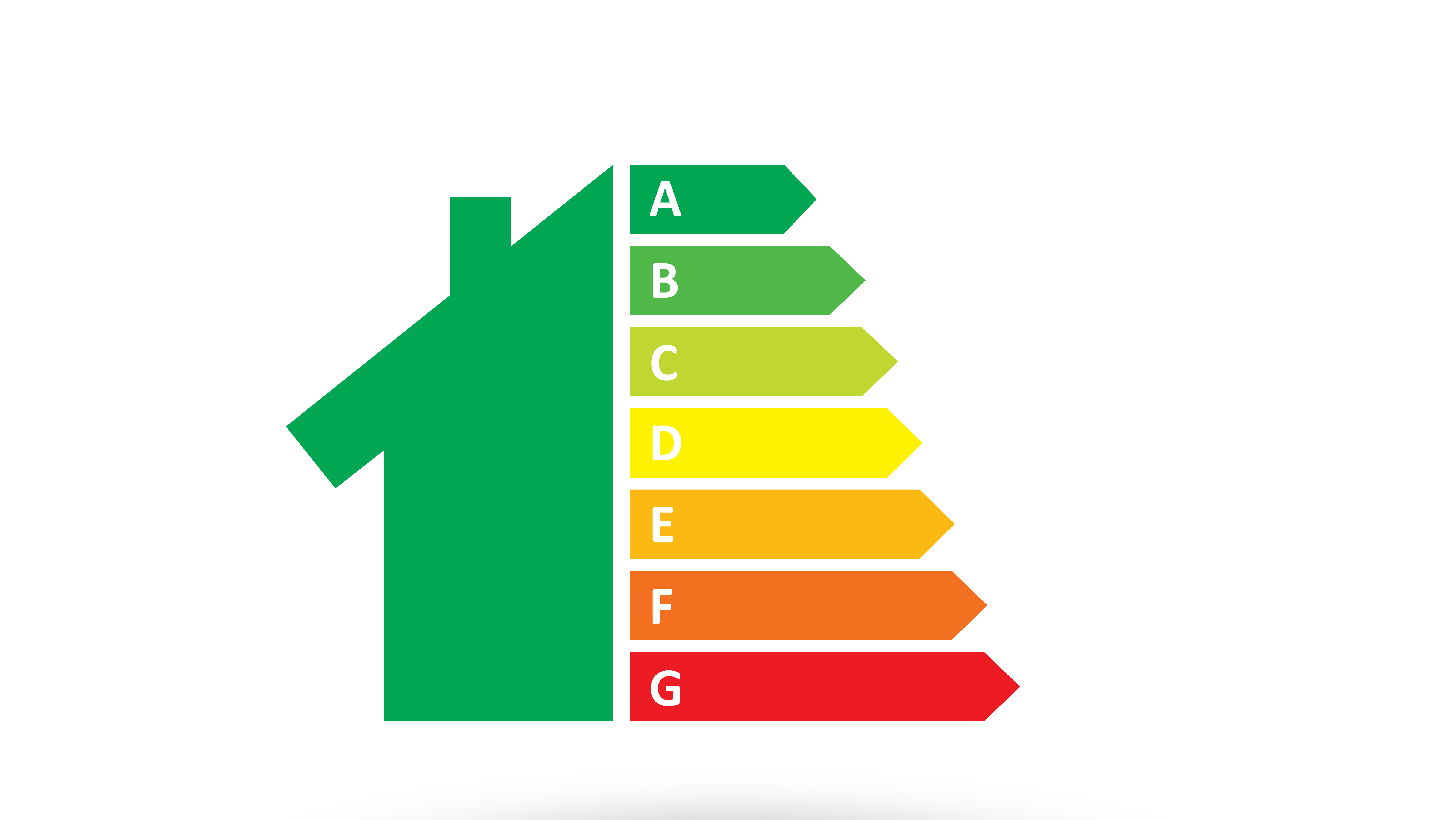
In the ever-developing world of eco-friendly and sustainable ideas and products, there’s never been a better time to start making green home improvements. A good way to start seeing gradual eco-friendly differences is to start small, and once you implement these simple and easy sustainable changes, they’ll start to make a significant difference to your bills and potentially even the comfort levels of your home.
Make These Easy Changes Today
Some of these changes may seem pretty obvious or self-explanatory, however, when they’re all done together, you’re sure to see differences in your annual bill.
- Turn off lights in unoccupied rooms – the simplest one to start with, don’t waste money and energy lighting up empty rooms!
- Closing your curtains when the sun goes down – when the sun goes down, it means the heating effect from solar radiation will stop. Closing your curtains will help keep heat inside and reduce draughts from your windows.
- Close interior doors – another simple trick, but by closing your doors you can keep the heat in the rooms you’re occupying and it means you can avoid heating unoccupied rooms.
- Start letting clothes dry without a tumble dryer – dry your clothes naturally on a clothes horse inside your home, or outside (weather permitting, of course). A typical tumble dryer can cost homeowners around £115 per year to run!
- Ensure any taps aren’t left dripping – dripping taps could fill around two baths with wasted water over the span of just 1 year.
- Energy Saving lightbulbs are your friend! – They last much longer than traditional lightbulbs, with a typical 20 watt CFL lasting around 12 years. In that time, you could save potentially £120 worth of electricity – and that’s just one bulb!
- Turn all of your appliances off of standby – if you turned all your appliances that aren’t in use off of standby, you could hypothetically reduce your electricity bill.
- And of course, make sure you have double or triple glazed windows and doors – this will help reduce draughts and increase the heat retention of your home. If you choose to have your windows or doors installed by a GGF Member, they are sure to give you the best priced windows with the best needs for your home. To find a responsible and sustainable GGF Member to work on your home, please click here. *link*
As you can see, there multiple ways to implement easy and accessible green home improvements within your home and they don’t have to cost you a lot of your hard-earned cash, or even any in some circumstances. If you can make as many of these simple changes as possible, you’ll start to see a difference to your bills.
The GGF are dedicated to helping homeowners save money on their bills, so to see what you could be saving, utilise the GGF Energy Savings Calculator.
You can now take time to focus on larger-scale changes that will make a difference, such as purchasing BFRC-rated products such as windows or doors, to contribute to reducing the impact of carbon emissions from your home, which will benefit not only you but the planet.
uPVC Scheme

The GGF’s free uPVC Recycling Scheme has been put in place to lend a reassuring hand to all UK homeowners that GGF Members are doing their very best to be sustainable, and are using recycled and environmentally friendly materials. Insight from a recent study by Deceuninck revealed that more than two-thirds of UK homeowners would choose to have windows and doors installed with a higher recycled content, and nearly 40% would actually pay more for them according to a YouGov.poll, which only demonstrates that the need to be sustainable is more important than ever.
In addition to those figures, 89% of UK homeowners also cited energy efficiency as the other major factor in a product’s green credentials, and acts as the main driver to home improvement purchasing, which was only topped by 91% of the study quoting security.
The Recycling Scheme, through our nationwide partnership with Alutrade, offers an extensive fleet of collection vehicles, which provides GGF Members the ability to recycle all of their old window frames after a job. This is to ensure this primary resource of raw material is captured and not lost to landfill or general plastic recycling.
Naturally, uPVC is a highly recyclable raw material which means that uPVC windows can be re-used and repurposed up to ten times, giving them potentially a 150 year lifespan! After all of the old material has been recycled, all of the recycled uPVC stays in the UK so we can continue to provide UK homeowners with sustainable, responsible and earth-friendly windows.
Being able to divert window and door frames from going to landfill with our recycling scheme, and then be able to use the recycled material to provide homes in the UK with sustainable window frames not only helps to demonstrate to homeowners how the GGF and its Members are doing their part to be environmentally responsible, as we have all increasingly become necessarily more aware of the impact of plastic waste on the environment. Recycling the pre-existing materials cuts down on new materials being used in addition to decreasing waste.
The GGF Recycling Schemes will continue to be heavily committed to recycling every piece of uPVC waste created and to be the trusted and reliable partner to the glass industry. The GGF Recycling Scheme is helping to create a place in the industry that ensures 100% homeowner confidence, and now is the best time to have your windows installed by an earth-conscious GGF Member.
If you’re looking for a responsible and sustainable window installer then you can get a quote from a GGF Member here.
Building Regulations – What is Approved Document F?
Buildings Regulations are government official guidelines for the construction industry that ensure all new buildings, conversions, renovations and extensions built are going to be safe, healthy and high-performing for homeowners.
Approved Document F of the Building Regulations covers Background Ventilation. It provides guidance on meeting building regulations and states that adequate ventilation needs to be provided to prevent excess condensation build up which could damage the structure of a property.
What Do The Changes Mean?
The changes to Approved Document F require the majority of replacement windows and doors to be fitted with trickle vents.
What Is A Trickle Vent?
A trickle vent is a device that allows fresh air to circulate naturally through a room and allow polluted air out. It creates a small hole in a window or door to provide permanent ventilation even when they are closed. They’re designed to improve the quality of air in a room.
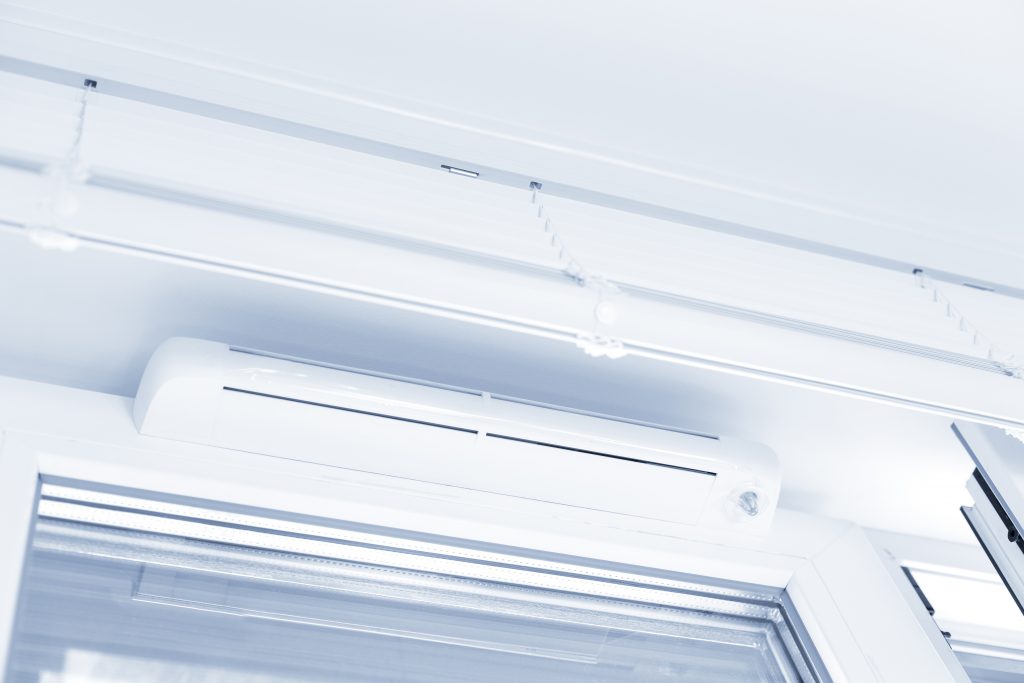
Over the years, homes have become better insulated and windows and doors have improved so that homes are no longer naturally ventilated as they have been in past decades. This means pollutants can build up inside a home, as can condensation and mould as a result.
This is where trickle vents come in, they help avoid problems associated with poorly ventilated areas. Increased airflow throughout a home reduces pollutants and makes for a healthier environment.
When Do The Changes Come Into Effect?
The changes to Approved Document F come into effect from the 15th June 2022. Any window and door installation taking place from that date onwards must comply with the new building regulations.
Anything Else I Should Know?
These changes to the building regulations are for England ONLY. There are no current changes to the Building Regulations in Wales.
It is also important to note that disclaimers and indemnity policies are not valid and will not be taken into consideration by LABC (Local Authority Building Control).
Who Should I Speak To About My New Windows & Doors?
Please speak to your installer about the upcoming changes and what they mean for your property. If the installation takes place from the 15th June 2022 onwards it will be expected to comply with the new building regulations.
It will be the responsibility of your window installation company to ensure your replacement windows and doors comply with the Approved Document.
What If I Don’t Want Trickle Vents Fitted?
The new building regulations state trickle vents will be required by law in the majority of situations. There are exemptions to the rule (eg listed buildings and conservation areas) and these should be discussed with your installer.
If your property does not fall under one of the stated exemptions then your installer will talk you through what will be required to be fitted to your replacement windows and doors.
What Do The Government Say?
The government have produced the following guide on ventilation in homes and what the new building regulations require – Gov.uk – Existing Home Ventilation Guide
We would recommend all homeowners read this guide and then speak to their installer to discuss the changes in more detail.
Bedford Bi-Folds Limited
Quality Glazed Doors & Windows
Providing a bespoke service from consultation to manufacturing, supply of architectural glazing and installation.
Bedford Bifolds Ltd is an award-winning family-run business that offers industry-leading expertise in manufacturing and fabricating aluminium, composite, PVCu Door & Window Profile Systems. Supplying and installing for Bedfordshire, Buckinghamshire, Northamptonshire, Oxfordshire, Cambridgeshire plus many other counties you can view the areas we cover here.
Designed to bring quality and value to retail and trade customers. We go above and beyond when manufacturing, supplying and installing our comprehensive range of doors & windows, consistently exceeding the build quality and service level demanded by the industry.

 Emergency Glaziers
Emergency Glaziers GGF Shop
GGF Shop MyGlazing.com
MyGlazing.com Find a GGF Member
Find a GGF Member